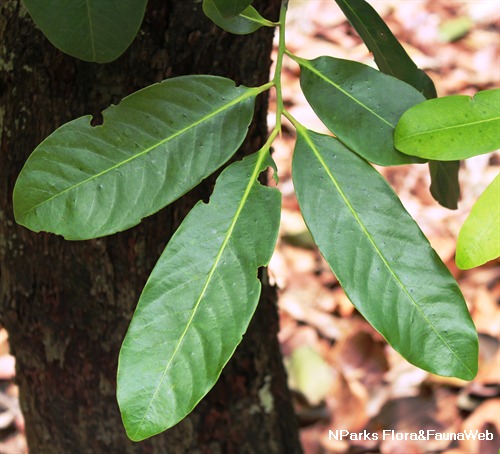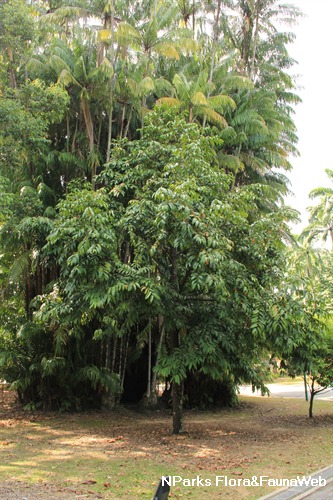
Name
Classifications and Characteristics
| Plant Division | Angiosperms (Flowering Seed Plants) |
|---|---|
| Plant Growth Form | Tree |
| Lifespan (in Singapore) | Perennial |
| Mode of Nutrition | Autotrophic |
| Maximum Height | 12 m |
Biogeography
| Native Distribution | Malay Peninsula |
|---|---|
| Native Habitat | Terrestrial |
| Preferred Climate Zone | Tropical |
| Local Conservation Status | Native to Singapore (Endangered (EN)) |
Description and Ethnobotany
| Growth Form | Small to medium-sized tree, able to grow up to about 9 - 12 m tall. |
|---|---|
| Trunk | Bark surface is terete or warty. |
| Foliage | Green oblong to oblong-elliptic leaves, coriaceous and alternate arrangement, measuring about 12 - 20 cm long and 5 - 10 cm wide, petiole about 0.8 - 1.2 cm long. |
| Flowers | Flowers usually 1 - 3 in a cyme inflorescence, corolla 5-lobed and hairy, stamens 10 and united in pairs by the bases of their filaments, staminodes 5 and glabrous. |
| Fruit | Fruit is orange, subglobose in shape and glabrous. |
| Etymology | Genus Diospyros is from the ancient Greek name "diospyron" used by Greek philosopher Theophrastus for the fruit of the nettle-tree. "Diospyron" is from two Greek words "dios" which means "divine" and "pyros" which means "grain", hence giving the meaning of "divine grain". Species oblonga means elliptic with blunt ends. |
Landscaping Features
| Desirable Plant Features | Ornamental Flowers, Ornamental Fruits |
|---|---|
| Landscape Uses | Parks & Gardens, Small Gardens |
Plant Care and Propagation
| Light Preference | Full Sun |
|---|---|
| Water Preference | Moderate Water |
| Plant Growth Rate | Moderate |
| Rootzone Tolerance | Moist Soils, Well-Drained Soils |
| Propagation Method | Seed |
Foliar
| Mature Foliage Colour(s) | Green |
|---|---|
| Foliar Apex - Tip | Acuminate |
Fruit, Seed and Spore
| Mature Fruit Colour(s) | Orange |
|---|
Image Repository
Others
| Master ID | 29636 |
|---|---|
| Species ID | 3945 |
| Flora Disclaimer | The information in this website has been compiled from reliable sources, such as reference works on medicinal plants. It is not a substitute for medical advice or treatment and NParks does not purport to provide any medical advice. Readers should always consult his/her physician before using or consuming a plant for medicinal purposes. |

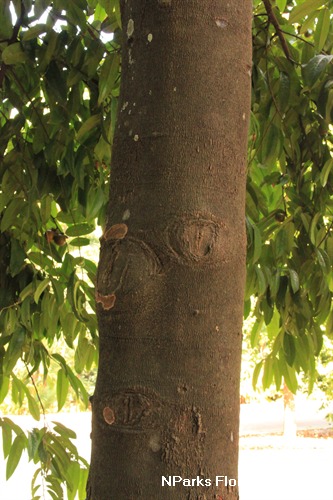
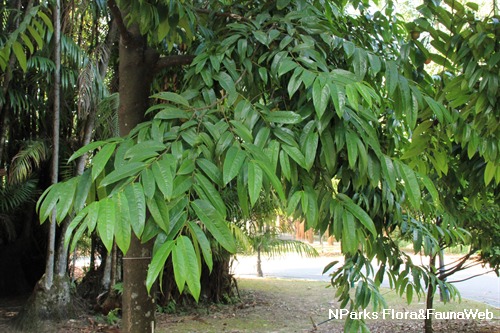
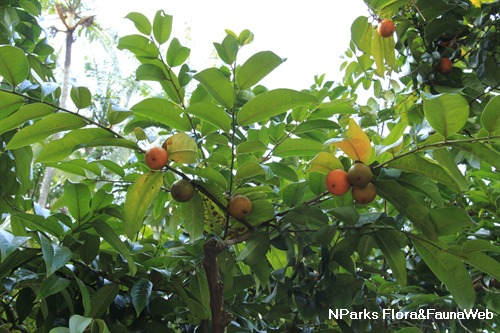
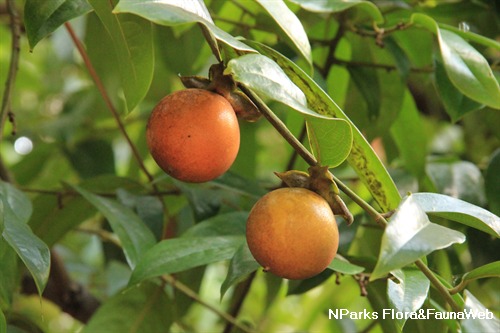
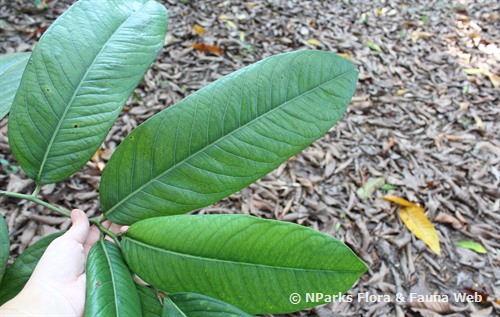
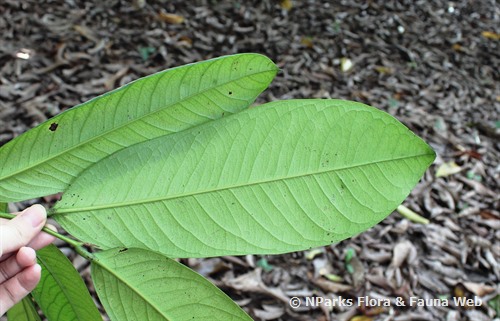
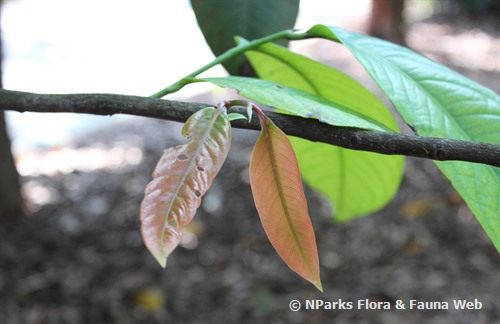
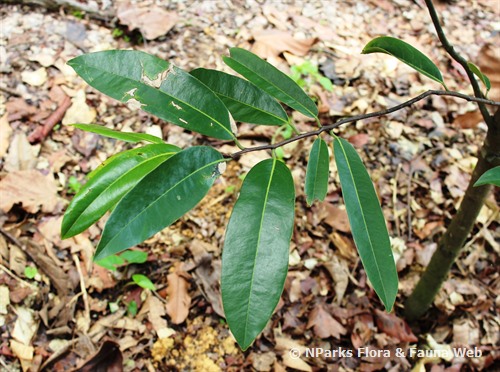
_lowres.jpg)
